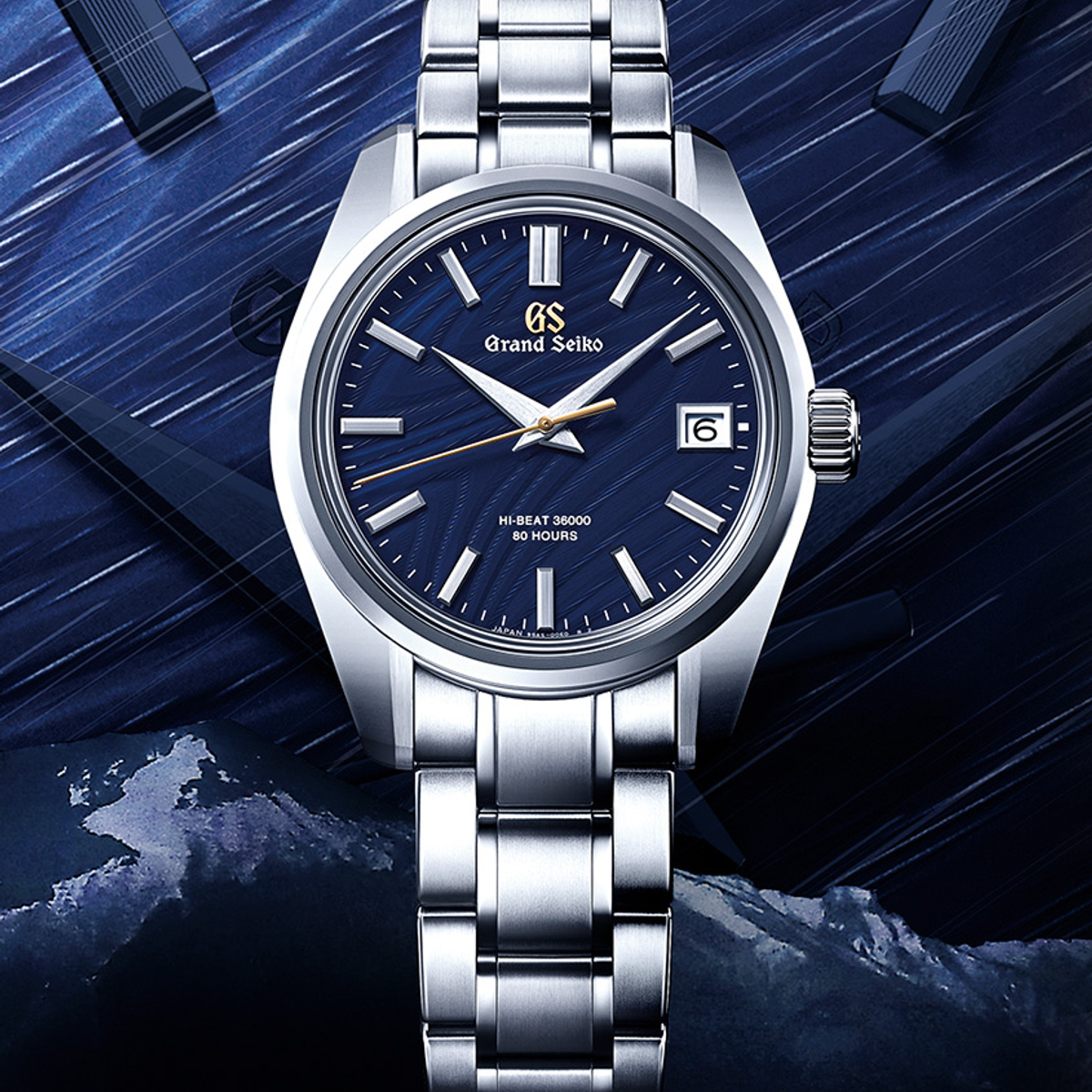The Heritage range returns to the early Grand Seiko watches, which it interprets using the latest techniques.
Launch Year
2022
Functions
hours, minutes, seconds, date
Movement
9SA5
Distinctive features
high-frequency watch for the 55th anniversary of the Grand Seiko 44GS
Because they were first to produce the quartz watches that inundated the market from the early 1970s, we tend to associate Japanese brands with this technology when in fact the country has a longstanding tradition of mechanical watchmaking. Seiko is one of its iconic representatives. Established in 1881, the company develops, manufactures, assembles and adjusts all its watches and components, including the regulating organs for its mechanical movements. This expertise is nowhere better expressed than in the Grand Seiko collection, which debuted in 1960. Initially reserved for the domestic market, the Grand Seiko has always been the company’s most prestigious range, and was itself a victim of quartz’s popularity. An executive decision to revive sales by launching a quartz Grand Seiko in 1993 fell flat: for the purists, a Grand Seiko had to be mechanical. It would be a further five years before the collection returned centre-stage, driven by a state-of-the-art mechanical calibre and, soon after, the famed Spring Drive electro-mechanical calibre. In 2010 Grand Seiko began its conquest of international markets and, in 2017, became a brand in its own right.
When Seiko’s watchmakers created the Grand Seiko in 1960, they applied themselves to making a precise, reliable, legible timepiece but were also attentive to its outward appearance, giving it a large dial opening and a facetted case whose brilliant Zaratsu polished finish is unique to Seiko. There was, however, one rule governing every Seiko product and that was that function must take precedence over any other consideration. The presentation in 1967 of the 44GS would confirm this. The now legendary model is the embodiment of Grand Seiko’s “Grammar of Design” – aesthetic principles defined by Taro Tanaka - in its flat front surface, sharply sloping case side and slim bezel that opens onto a perfectly legible dial. Soon it would be equipped with the brand’s first automatic movement followed by one of the market’s first high-frequency movements, beating at 5 Hz.
There have been numerous iterations of the Grand Seiko since 2017, ranging from sports watches to women’s models and models fitted with electro-mechanical movements. Introduced in the early 2020s, the Heritage range returns to the early Grand Seiko watches - which doesn’t prevent it from implementing the brand’s latest technological advances. This is notably the case of the SLGH009, a tribute to the 44GS released in 1967. The case and bracelet are in Ever-Brilliant-Steel, a stainless steel that provides a high level of durability and has a brilliant white hue. The high-precision Caliber 9SA5 movement, first presented in 2020, is the latest generation of Seiko high-frequency movements. It beats at 36,000 vph and incorporates a dual impulse escapement, a free-sprung balance and twin barrels which provide 80 hours of power reserve. As for the dial, its etched pattern recreates the elliptical orbit of the stars; part of the natural world that is fundamental to the Grand Seiko philosophy.
Key Characteristics
- Anniversary watch inspired by the Grand Seiko 44GS of 1967
- In-house high-frequency movement with dual impulse escapement
- Textured dial evoking the stars and the natural world; a fundamental concept at Grand Seiko


